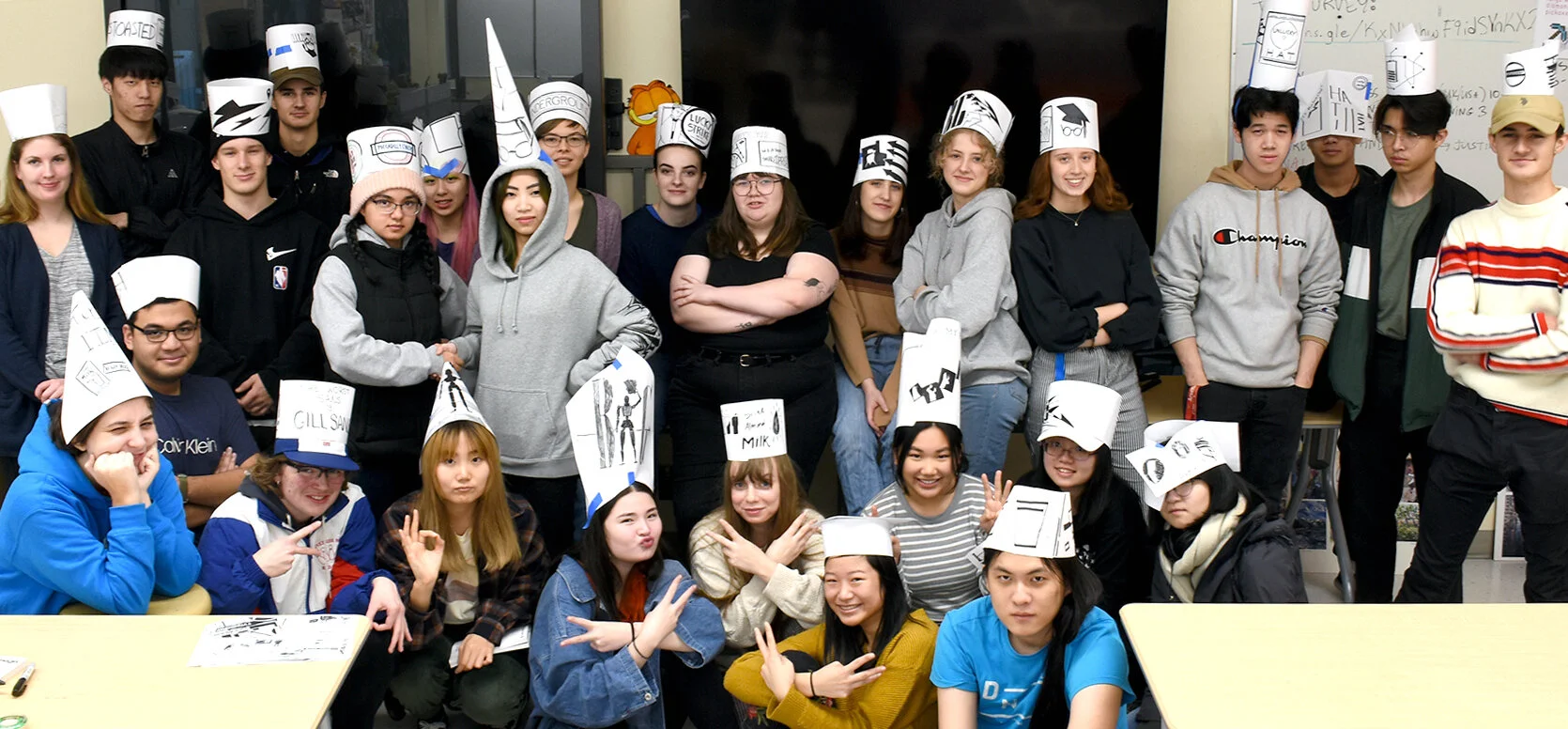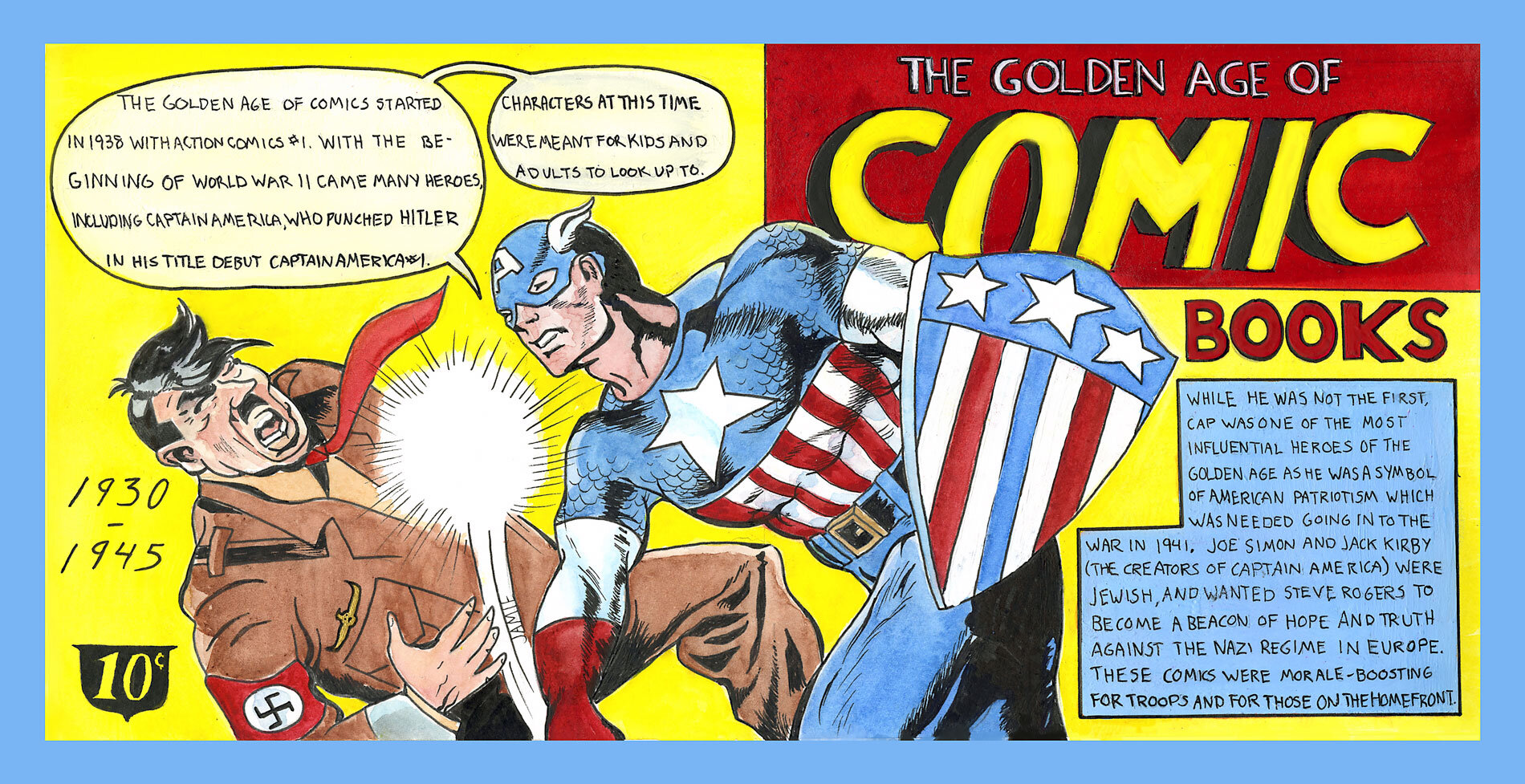Time-travelling First-year Students (IDEA Grad 2023) Make their own Design History Book
Every Fall IDEA School of Design at Capilano University welcomes a new crop of first-years. As well as learning about creative thinking techniques, drawing and painting skills, and basic design principles, the students learn about the origins of communication design and illustration. In our four first-year survey classes they learn about how mankind went from verbal storytelling and cave paintings to Tweeting and Snapchat.
IDEA Grad23 modelling headwear made in one of our early-morning quick-fire exercises.
In the Survey of Design classes (IDES 141 and IDES 142), students learn about the evolution of printing, design, and typography. In Survey of Illustration (IDES 131 and IDES 132), they learn about the history of art and illustration. The projects in these classes allow students to practice some of the techniques of storytelling that have developed over time. In Term 1 students work exclusively in traditional mediums. In the 141 class, they test out their storytelling skills by making their own History of Design textbook. Every student receives a printed copy.
Designed by Megan Barry
Communication design didn’t evolve in a vacuum. Its evolution is inextricably linked to societal change, trends, and advances in technology. So students look at design history from a holistic viewpoint. They look at how geopolitics, scientific discovery, and culture have played a role in the way we communicate as designers. This makes for a fun book that explores not only the origins of design but also the way our perception of ourselves and the world around us has changed over time.
Designed by Connie Low
Designed by Dallas McKinnon
Before the internet transportation played a very important role in communication. Ships allowed us to gain exposure to cultures on other continents. National newspapers didn’t exist until the railways enabled us to transport them from coast to coast. These make for some compelling topics for the students to explore.
Designed by Natasha Jones
Designed by Sandrine Dionne
Each student creates several spreads for the book, including one based on an artifact they make themselves. This can be the most fun part of the project, but also sometimes the most challenging. Photographing the object allows the students to apply some of the skills they learn in their IDES 133 Visual Studio photography class. David Bautista recreated a letter and sketches by the famous early 20th-century fashion designer Paul Poiret.
Designed by David Bautista
Designed by Grace Choi
As well as documenting many of mankind’s successes, students tackle some of mankind’s failings. Grace Choi used her artifact spread to acknowledge how colonizers knowingly spread smallpox among the Indigenous population of what we now call Canada. Raha Namdari created an infographic to demonstrate how cleverly the Klu Klux Klan used networking to build a following of over one million Klansmen. Jamie Kusack took inspiration from the First Captain America comic book to explore a facet of communication during the Second World War.
Designed by Raha Namdari
Designed by Jamie Kusack
For their final assignment students compete to design the front and back covers for the book. This year’s winners—selected by their peers—were Cale Cooper and Grace Choi. Cale came up with a clever board game concept for the front cover that captured some of the most significant events of the period.
Cale Cooper’s design history board game cover design
This talented class is a boisterous bunch. For her back cover design Grace meticulously illustrated them as members of a chaotic IDEA orchestra dressed in costumes ranging from caveman to the 1940s. (The period the 141 class covers.) And yes that's me as the struggling conductor on the right trying to keep this motley crew in line.
Grace Choi’s design back cover design
Every year I look forward to seeing the fresh perspective students bring to the origins of communication design and how it has impacted the world around us.


















